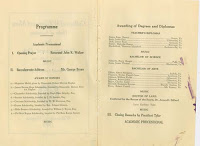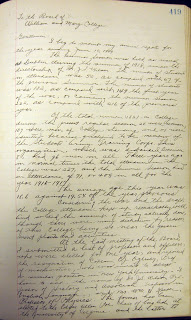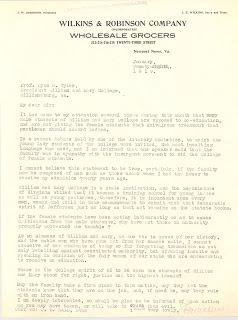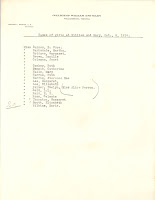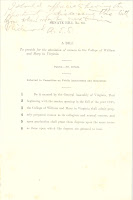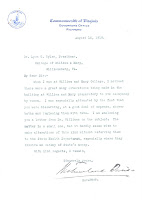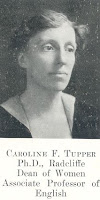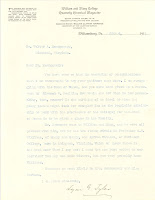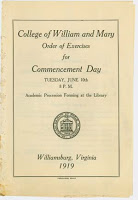 The final day of College of William and Mary commencement activities in 1919 was a lighter day with the final exercises, including the all important conferring of nine bachelors degrees and five teacher's diplomas upon the graduates, on Tuesday, June 10th followed by the aptly named Final Ball later in the evening.
The final day of College of William and Mary commencement activities in 1919 was a lighter day with the final exercises, including the all important conferring of nine bachelors degrees and five teacher's diplomas upon the graduates, on Tuesday, June 10th followed by the aptly named Final Ball later in the evening.The commencement program opened with an academic procession from the library (today's Tucker Hall) to the chapel in the Wren Building. An opening prayer was given by Rev. John K. Walker followed by a musical selection and the commencement address by George Bryan. Awards and honors were then presented followed by the awarding of Teacher's Diplomas and Bachelor of Science and Arts degrees. After another musical interlude, the honorary Doctor of Laws degree was bestowed on President Lyon G. Tyler by Rector of the Board of Visitors James H. Dillard. After a fifth musical selection, the retiring William and Mary president gave his closing remarks.
Tyler's farewell address (which was also his final report to the Board of Visitors) naturally recounted his time in service to the institution as its president over the previous thirty-one years. The complete text of his address is available in the Special Collections Research Center with an excerpt provided here:
"I have never seen the State of Virginia yet refuse an appropriation when the argument could be advanced that the College was over-flowing. I rejoice that my last fight in the Legislature for the admission of women will contribute to this end. The experiment of admitting women to the College of William and Mary has been fully vindicated by the results of this session. The young ladies have been models of decorum and have stood among the first in their classes. I rejoice that old William and Mary has taken the lead among the colleges of Virginia in this particular, and I hope soon to see women accorded all the legal and political rights which justly belong to them."
